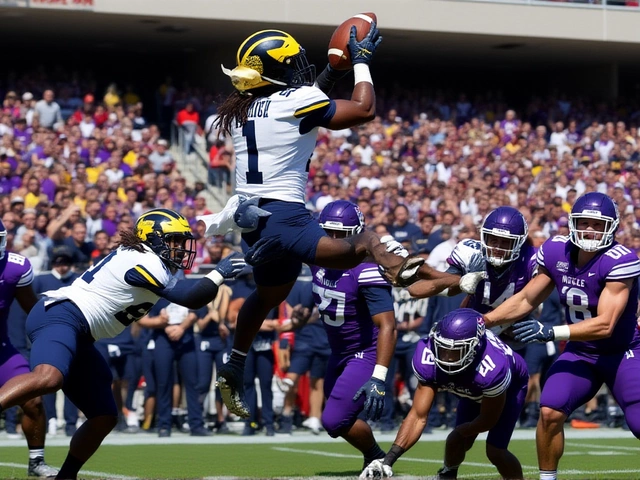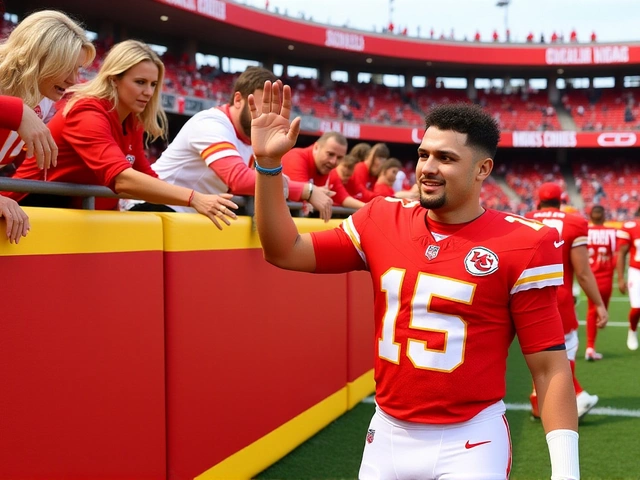Ekeler goes down late vs. Green Bay as Washington braces for the worst
Non-contact. A sudden drop to the turf. Trainers sprinting out. The scene around Austin Ekeler injury late in the Commanders’ 27-18 loss to the Packers on Thursday night told a grim story before anyone said a word. The 30-year-old running back grabbed the back of his right lower leg after planting on a route with 5:50 left, then needed help to the sideline. He did not return.
Team staff examined Ekeler’s right foot and lower leg near the bench before escorting him to the locker room. Within minutes, Washington ruled him out. NFL Network’s Ian Rapoport reported the initial fear inside the building: a torn Achilles. The final word will come after imaging, but there isn’t much optimism about the MRI changing the outlook.
The play itself was routine—3rd-and-10, Ekeler aligned in the slot, chipped a rusher, then settled and turned upfield. As he planted to cut, he dropped, untouched. These are the moments trainers dread because non-contact Achilles injuries often look just like that: a clean plant, a sudden give, and a player reaching for the calf.
Before the injury, Ekeler’s night was quiet. He finished with eight carries for 17 yards and two receptions for seven yards. Washington trailed 27-10 with under four minutes when he exited, then added a late score to close the gap to 27-18. The loss stings, but the bigger blow is what this likely means for the weeks and months ahead.
Washington brought Ekeler in to be a stabilizer—someone who could turn third-and-long into something manageable, protect the quarterback, and double as a reliable receiving outlet. Even when the box score stays modest, his value shows up on the calls coaches can make: more option routes from the backfield, more screens, and more flexibility in pass protection. Losing that on a short week is a strategic gut punch.
What a torn Achilles would mean for Washington—and for Ekeler
If the MRI confirms a rupture, Ekeler’s 2025 season is over. That’s the typical outcome for running backs with this injury, especially at age 30. The usual path is surgery within days, then a long rehabilitation window that often runs 9 to 12 months. Some players beat that curve—Cam Akers returned for the 2021 playoffs just over five months after his surgery—but that’s the exception, not the expectation. For backs who cut and accelerate on every snap, the ramp-up is even tougher.
Recent history is sobering. J.K. Dobbins’ 2023 Achilles tear ended his season in Week 1. Marlon Mack’s 2020 tear cost him the year, and he needed time to find burst again. D’Onta Foreman took a full year plus to reclaim a role. None of these cases are identical, but they illustrate the physical and mental hill a running back has to climb after this specific injury.
For Washington, the fallout starts immediately. The third-down package changes. The screen game changes. Protection checks change. Coaches likely have to lean more on tight ends in pass pro, shift more of the quick-game targets to slot receivers, and bubble some of the early-down touches to a committee. Ekeler’s vision and feel on option routes don’t just plug-and-play with the next man up.
It also alters the balance on early downs. Even when the defense knows it’s a pass, Ekeler forces linebackers to honor swing routes and checkdowns. That widens windows for in-breakers and quick outs. Without him, defenses can tighten those windows and be more aggressive with pressure looks, especially on third-and-medium—exactly the situations Washington had been using him to manage.
Zooming out, this is brutal timing for a team building rhythm with a young quarterback. A back who can sort out blitzes, chip edge rushers, and still release on time is a safety net—not just for the passer, but for the play-caller. You feel that loss on the headset as much as you do on the field.
Ekeler’s recent workload underscored that trust. Even in a limited 12-game season last year, he posted a near 50-50 split between rushing (367 yards) and receiving (366 yards). That’s not a coincidence; it’s a blueprint. Washington had been leaning on his dual-threat skill set to smooth out third downs and keep drives alive. With him out, expect a tilt toward more quick-hitting passes on the perimeter and a heavier dose of two-tight-end looks to help with protection.
What happens next is procedural but important:
- MRI to confirm the diagnosis and determine the extent and location of the tear.
- If confirmed, an injured reserve move to open a roster spot.
- Reconfiguration of third-down and two-minute packages, likely spreading responsibilities across multiple backs and tight ends.
- Practice-squad elevation or a depth signing to round out the rotation.
Medically, the first 10 to 14 days after surgery focus on protecting the repair and managing swelling, then a slow progression to range-of-motion work, loading, and eventually on-field movement. Return to straight-line running often happens around the three- to four-month mark, with cutting and contact well after that. Teams usually won’t green-light a running back for full-speed cutting until strength symmetry and tendon tolerance check out under load.
It’s a devastating development for a veteran who made a career out of beating the odds. Ekeler entered the league undrafted, carved out a feature role with the Chargers, and rebuilt a profile in Washington as a reliable, high-IQ piece of the offense. Now he’s staring at the kind of rehab that tests patience and focus every single day.
There’s still a sliver of hope until the MRI lands, but everyone involved knows what a non-contact collapse like this often means. Washington will adjust. The depth chart will shuffle. The playbook will bend. But replacing the timing, trust, and versatility Ekeler brings to third down? That’s the hard part.




